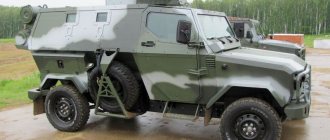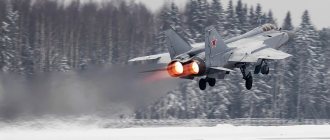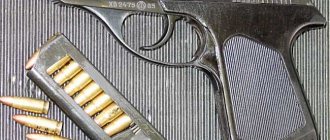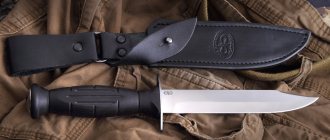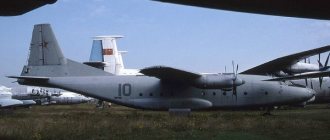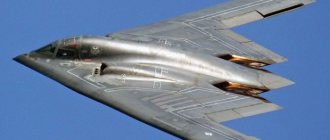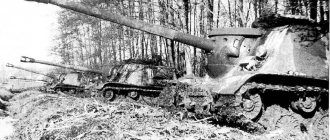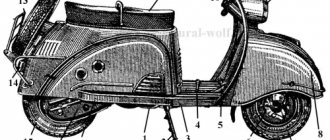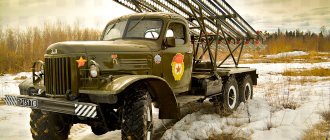Home | Weapons | Pistols | Russia / USSR | Yarygin PYa / Grach
The pistol, designed by Vladimir Aleksandrovich Yarygin, was created at the Izhevsk Mechanical Plant in accordance with the tactical and technical specifications of the competition for a new pistol for the army and law enforcement agencies, called “Rook”. The TTZ was formulated in January 1991 and subsequently changed several times. Work on the design of a new weapon began in 1993. Along with the pistol, a new cartridge was also being developed, which was supposed to surpass both the domestic 9x18 and NATO 9x19 cartridges in the penetration and stopping effect of the bullet. It was decided to focus on improving the 9x19 (9mm Parabellum) cartridge.
The automation works according to the scheme of using recoil with a short barrel stroke. Locking is carried out using the lowering breech of the barrel, which enters with its rectangular protrusion located above the chamber into the window for ejecting spent cartridges of the bolt-casing. The reduction occurs when the inclined surface of the internal groove in the breech boss of the barrel interacts with the axis of the bolt stop. The frame and bolt casing are made of carbon steel, and the barrel is made of stainless steel. The trigger mechanism is hammer-type, double-action with automatic safety cocking. The openly located trigger is covered from the sides by the rear part of the bolt-casing to prevent the trigger from getting caught on the shooter’s clothing or equipment when removing the weapon.
The trigger force when operating in self-cocking mode is 5.8 kg, and with pre-cocking the hammer - 2.6 kg. Such values are optimal for military weapons, providing sufficient safety when handling a loaded pistol. The double-sided safety levers are located on both sides of the frame, above the handle. When turned on, the hammer is locked in any of its positions, the trigger, the sear and the bolt-casing are blocked. The bolt stop lever is located on the left side of the frame. The ejector is also an indicator of the presence of a cartridge in the chamber.
The magazine latch, located on the left side of the frame, at the base of the trigger guard, can be easily moved to the right side. The box magazine holds 17 rounds with a double-row arrangement, as well as a double-row exit. Sights consist of a front sight and rear sight, fixed in a dovetail groove with the possibility of making lateral adjustments. The front and rear sights are equipped with white inserts to simplify and speed up aiming in low light conditions. The cheeks of the handle are made of plastic. The frame and bolt casing are made of carbon steel. The barrel is made of stainless steel by cold forging, and its bore is chrome-plated.
The 9×19 cartridge used in the PY is also of great importance. The main feature and advantage of the new cartridge, designated 7N21, is an armor-piercing bullet with a steel core protruding from the shell. As a result, the penetrating effect of the bullet increased significantly, which was the main requirement for the new cartridge. The bullet itself has a mass of 5.4 g, an initial speed of 450 m/s and an energy of 550 J. This cartridge can be used in any modern pistol of this caliber, and the PY, in turn, can shoot any other 9x19 cartridges.
The Tula Cartridge Plant and the Novosibirsk Low-Voltage Equipment Plant also produce cartridges with a bullet with a lead core, which have a lower cost than armor-piercing ones. Upon completion of the design work, the final version of the pistol was ready in 1995. Several experimental samples were made for the .40 S&W cartridge, popular in the USA, but they did not go into series due to the lack of large customers for such weapons in Russia. When debugging 40-caliber samples, problems arose with the reliability of feeding cartridges, but they were solved by introducing a special part into the design - a movable feeder.
After much work on possible design options, numerous improvements and modifications, the finished pistol at IZHMEX-e received the name MP-443, and MP should be read as Latin letters, which are short for Mechanical Plant. However, for official testing, the weapon was assigned the index 6P35. At the research site of the Russian Ministry of Defense, the pistols were tested for service life, reliability of operation in normal and difficult conditions (shooting without lubrication, at a temperature of - 50 to + 50 degrees Celsius, in dusty conditions, in rain). In total, about 1,500 shots were fired during such tests.
The PYa has demonstrated compliance with most of the stringent requirements of the RF Armed Forces. FSB officers highly appreciated the fighting qualities of the Yarygin sample. The tests were successful and the pistol was given the name PYA (Yarygin Pistol), under which it was adopted by the Russian army and law enforcement agencies in 2003. However, financial difficulties do not allow for full-scale rearmament and only a few elite units of the Armed Forces and special forces of the Ministry of Internal Affairs, FSB and GRU are equipped with Yarygin pistols. On October 9, 2008, the Ministry of Internal Affairs of the Russian Federation began to systematically replace Makarov pistols with PYa. But, again, taking into account problems with financing and the huge number of PM used by existing employees and stored in warehouses, rearmament is proceeding at a slow pace.
Like any weapon, the PY has both disadvantages and advantages. The angular handle is not comfortable enough to hold. The manually operated safety makes the weapon difficult to handle, but with regular training it does not cause any problems. The trigger, which is closed on the sides and does not have a safety release lever, cannot be moved to the forward position manually. This makes handling the weapon very difficult. A significant disadvantage of the design is the lack of a safe decocking function, which has become an almost mandatory element of the design of any modern combat pistols. The sights, made in the manner of Western designs, are equipped with white dots. The front sight is made very wide. This was supposed to speed up aiming, but had a very negative impact on shooting accuracy. In general, many of those who had experience shooting from PYa noted mediocre shooting accuracy at a distance of 25 meters. But this applies, as a rule, to pistols of early release.
The PY's slide-casing is quite high and massive, which is why the center of mass of the pistol, when held, is perceived as being higher than the hand and there is a tendency for the weapon to “collapse.” The pistol is bulky, heavy and has a considerable width. The latter circumstance greatly impedes concealed carry, and the large mass burdens the owner if the weapon is carried constantly. The trigger has a long trigger stroke, but at the same time, the stroke is quite smooth. Users noted problems with operational reliability when using cartridges from the Barnaul Machine Tool Plant, despite the fact that the pistols always worked perfectly with cartridges from the Tula Cartridge Plant. Currently, there are no problems with Barnaul cartridges due to their increased quality. Inconvenient incomplete disassembly, in comparison with the same PM or Glock, not to mention complete. The disadvantages include the lack of grooves for attaching tactical flashlights and laser lasers. The guaranteed firing rate of a PY is 4000 rounds, which is simply unacceptable by modern standards.
Preface
Until recently, IzhMech’s range of “entertainment” air guns was in a state of complete stagnation - in fact, after the release of the MP-654K, the plant did not create a single new model for the average user. Several models of sporting weapons were released in very small series, which, however, also had many complaints, but for ordinary users - nothing new.
That is why the appearance at the end of 2006 at the “Weapons and Hunting 2006” exhibition in Gostiny Dvor of the pre-production MP-655K sample aroused considerable interest among pneumatic enthusiasts. The sample exhibited at that time was, rather, a mock-up - it did not have a trigger mechanism, there was no barrel. In essence, the concept and appearance of the new model were demonstrated. True, given the “efficiency” of IzhMekh in terms of launching a new model into production, no one really expected its actual appearance on the shelves before 2009-2010. Especially remembering the history of the launch of the MP-514K series, which has been at exhibitions since 1999, and only appeared on sale in 2005. By the way, the designers of that rifle and the MP-655K are the same: Georgy Romanov and Konstantin Nikitin.
Some of the external design elements of the new pistol were very familiar. The characteristic trigger, the trigger, the low position of the barrel - everything pointed to the close relationship of the new model with the well-known MP-651K. However, there were also interesting differences: a hopper for balls in the bolt instead of a linear magazine, a detachable magazine with a cylinder and a valve, the presence of a false barrel in the place where there should have been a real barrel of a combat pistol (as far as I understand, the company was the first to use the idea with a false barrel A+A in his pistol Ataman). In general, the situation was very interesting - two opposite scenarios were possible: either the new model would turn out to be just as excellent a “designer” for modification as the MP-651K, but with a more beautiful appearance, or, on the contrary, it would turn out to be relatively nice, but an expensive and ineffective pistol. As usual, the result was somewhere in the middle: the result was not a “designer”, but not a completely stupid pistol either.
In general, in April 2008, information about the launch of the MP-655K into series appeared on the official website of the plant. This was simply unheard of efficiency, given the experience of launching previous models into series. In reality, the first copies went on sale somewhere in May of the same 2008. At first for a very unreasonable 4-5 thousand rubles, later the price in good stores dropped to 3 thousand and below. However, in many stores this pistol never appeared at all; probably, the store owners considered it inappropriate to purchase it and, perhaps, they are right - the pistol, according to my observations, sells out very slowly and it is very difficult to make a large markup on its price .
Prototypes
The prototypes of this pistol are a bit of a mess. On the one hand, all official sources (and in particular, the IzhMech website) indicate that the pistol is similar in appearance to the Yarygin Pistol. However, if you turn, for example, to the website of Maxim Popenker, then you can find there not only the Yarygin pistol (aka MP-443 “Rook”), but also the Viking pistol created on its basis (aka MP-446). As follows from the description, the main external differences are a slightly different bolt and a plastic frame for the Viking, versus a steel frame for the Yarygin pistol. Moreover, if you look closely at the pre-production sample MP-655K, you will see that its plastic frame is clearly taken from the Viking, but the bolt is closer to Yarygin’s pistol. In the production model, the plastic frame was slightly modified; as a result, the bolt, similar to the bolt of the Yarygin pistol, and the plastic frame, vaguely reminiscent of the Viking frame, were preserved. This is such an interesting hybrid. Again, there are discrepancies in the controls - only the slide stop is an exact copy, but the safety, although similar in operation, is not the same. And the trigger also distinguishes the pneumatic “copy” from the original.
In general, the situation is somewhat reminiscent of that with the Walther CP99 Compact pistol - there is no clear prototype, but there is a collective image of several models.
Design
As usual, the place to start is with the packaging. The packaging also resembles that of the Walther CP99 Compact - a small cardboard box with an image of a pistol on the outside, however, in this case, for some reason, the colors on the box are very faded. In general, an unusual move for IzhMekh - mostly its pistols were packaged in black plastic cases with a company logo.
Inside the box, in addition to the gun itself, there are: a passport, a cleaning rod and a bag with a clip for bullets and spare gaskets. The clip for the balls is initially installed in the gun.
The pistol itself looks quite good, if you do not pay attention to the trigger similar to the MP-651K, which immediately gives away the pneumatic essence of the pistol. Again, the situation is not new - the situation was similar with the Junker-1, in which the handle and trigger from the MP-651K also issued pneumatics. By the way, to be completely precise, the trigger here is not from the MP-651K, but from its predecessors - the Izh-67 or Izh-671. The difference is the absence of a transverse safety slider; the predecessors did not have one, but the MP-651K does. Again, on the pre-production sample the trigger was still from the MP-651K - the safety “patch” covered with a plug is clearly visible there, and the trigger itself was black, unlike the shiny one on the production model.
When you take the gun in your hands, the impression is somewhat spoiled. No, everything is fine with the materials of manufacture - a metal, although not steel, bolt (probably a light alloy) and a good plastic handle. The backlashes leave an unpleasant impression - the bolt dangles on its guides, the magazine inserted into the handle dangles. The play is about 1mm, i.e. It's hard not to notice him. Accordingly, an unpleasant impression of some kind of unreliability and laxity is created.
As for the controls, they are quite convenient here, since their location is honestly copied from the prototypes. I’m very pleased with the double-sided safety, which is convenient to operate for both right-handed and left-handed people. But for some reason the bolt stop is located only on the left side of the pistol (as, indeed, on both prototypes). The difference from the combat prototype is the additional groove for the bolt stop on the bolt. The reason for this is simple - in addition to the position of the shutter on the standard groove, when it is pulled back almost all the way, an intermediate position is also required to make it convenient to remove the clip, which is hidden by the shutter in other positions. The magazine release button also works flawlessly and when you press it, the magazine is easily removed from the handle.
The magazine itself is interesting in that it only contains a cylinder and a valve, but does not contain bullets or balls. All ammunition is located under the pistol's slide, in a clip or hopper.
As mentioned above, in place of the combat barrel there is now a “false barrel”, and the pneumatic barrel itself is in place of the bolt guide. The “false barrel” itself has a huge diameter (about 13mm), which suggests that a firearm with such a barrel should have a caliber of at least .50AE, which is a very rare caliber for pistols and of the more or less well-known pistols, only that Desert Eagle. Of course, this barrel caliber is very different from the 9mm of combat prototypes, but this diameter is due to the design of the bunker, or more precisely, the internal diameter of the clip between the chambers for the balls. But there is also a nice feature - the plastic “false barrel” even has rifling! By the way, again, this design (“false barrel” on top and a working barrel on the bottom) echoes the Junker-1, in which the original combat barrel was tightly welded, and firing was carried out from the under-barrel tube in place of the cleaning rod.
If you look at the pistol from below, you will be very pleased with the blank heel of the magazine - there are no traces of the cartridge holder screw. Also clearly visible is the Picattini rail, which appears instead of the guide grooves of the Viking frame. In principle, the solution is quite understandable - finding, for example, a laser center made specifically for the Viking, I think, is quite difficult, but the same laser center, but mounted on a Picattini rail, is much easier.
When looking at the pistol from above, in general there is almost nothing to catch your eye on. On top there are: a fixed front sight, a rear sight adjustable in two planes and a sliding lid of the hopper for balls. By the way, it is declared that the rear sight used here is similar to the rear sight of the Izh-70 pistol.
If you look at the pistol from the front, you get a double impression. On the one hand, the huge hollow of the “false barrel” perfectly attracts attention and the pneumatic barrel looks quite organically as a bolt guide. On the other hand, in the depths of the “false barrel” you can see the ball feeder in the bunker (which, when the bunker is equipped, moves forward and becomes very noticeable), which is also white and therefore clearly visible.
On the rear side of the pistol, you can see the trigger from the MP-651K, completely hidden by the sides of the bolt, just like on the combat prototype. This greatly reduces the likelihood of the trigger getting caught on something, but it also makes it inconvenient to shoot with preliminary cocking of the hammer, which is rarely used in firearms (because there the hammer is cocked when the bolt is rolled back on the previous shot), but is very often used when shooting from air pistols.
An interesting feature also appears when equipping a pistol. If you shoot bullets, then the clip with bullets is inserted and removed at an intermediate position of the bolt, with the hopper lid slightly pulled forward, which simultaneously holds the clip from above. But for loading balls, it is better to close the bolt completely, since in the closed position a larger stroke is formed for the hopper lid. The fact is that when the hopper lid is opened, it also pulls the ball feeder in the hopper, freeing up space for filling the balls. And the further you can move the hopper lid forward, the more it takes the ball feeder behind it and the more space in the hopper for pouring balls into it. Although, in principle, a quite sufficient window is formed in the hopper even with an intermediate position of the shutter, but only 60-70% of the maximum load of the hopper includes balls.
Another argument for a fully closed bolt position when loading a pistol with balls is the feeder lock. In the intermediate position of the shutter, when the hopper lid is not far away, the ball feeder in the hopper goes away along with the lid, but does not rest on the latch. As a result, when you try to close the lid back, it moves back along with the lid and tries to squeeze the balls out of the hopper. If the shutter is closed and the hopper lid is moved to the extreme forward position, then the feeder stands on the latch and begins to move back under the action of the spring only when the hopper lid reaches the clip. Thus, the balls are compressed already on a closed bunker and they have nowhere to go - only into the clip, into all the chambers at once, except for the one opposite the barrel. It is precisely this effect that ensures the large diameter of the “false barrel”.
Among other things, the same ball feeder in the bunker also works as an indicator, showing the approximate balance of balls. To do this, just pull the bolt back and look at the “false barrel” from above. There are three holes made in it, simulating compensatory holes on firearms. Depending on which hole the feeder is visible in, you can estimate the number of balls in the hopper: the hole closest to the muzzle is about 100 balls, the middle one is about 50, and the hole closest to the clip is about 20 balls.
Also, the design of the hopper with a spring-loaded feeder ensures a confident supply of balls into the clip in any position of the gun (tilts in any direction and even turning it upside down) and the absence of a rattle effect - the balls in the hopper do not dangle or make noise if the gun is shaken.
Next we move on to the store. As mentioned above, the store contains only a cylinder and a valve. Among the interesting points, it is worth noting the removable heel of the magazine, which is attached with a latch on the front and performs three functions at once: firstly, it covers the cylinder screw protruding from the magazine, and secondly, its hollow rectangular tube can be used as a dispenser when pouring balls into the hopper, thirdly, can act as a lever for tightening the clamping screw when piercing the cylinder.
There is also nothing unusual in terms of materials - most of the magazine is made of plastic, but loaded parts such as the hook for fixing the magazine in the pistol or the nut for the clamping screw are steel. It is possible that the plastic is reinforced from the inside with some kind of non-magnetic metal, but it is unlikely - there are no large loads, and there is no need to complicate the design.
At the back of the magazine, under the valve, there is a groove for installing a can and a clamping screw for piercing it. Here, in general, there are also no surprises, the only peculiarity is that the top of the clamping screw is absolutely flat, without the usual recess under the bottom of the cylinder.
As mentioned above, the main function of the magazine heel is decorative. The magazine can be used without it; it fits perfectly into the gun and works. True, at the same time, the appearance deteriorates somewhat due to the ugly bottom of the handle, from which the clamping screw sticks out, and the grip deteriorates (the little finger begins to slide onto the magazine, rather than resting on the heel protrusion)
By the way, the fixation of the heel in the store is very weak, so you can remove the heel without any big problems without pressing its lock on the front of the store, but simply by pulling it down. Accordingly, it can be removed at any time, for example, even with a magazine installed in the pistol. In my opinion, this is wrong, since it is on it that the little finger rests when holding the pistol and, accordingly, if the movement is unsuccessful, this heel can be accidentally removed, which will lead to a temporary cessation of shooting until it is installed back.
The reason for this incorrect behavior of the heel is obvious - a weak lock. Its design is primitive, and since it is not worth increasing the protrusion so that it does not protrude from the magazine body, the most realistic way to correct this problem for those interested would be to reduce the cuts around the retainer (glue or solder) in order to increase its rigidity.
To be fair, it should be noted that accidental ejection of the heel separately from the magazine is only possible with sufficiently large hands holding the pistol. The photo below shows how the MP-655K fits in my rather large hand and in a much smaller woman's hand. Obviously, in the latter case it is impossible to accidentally reach the heel, but for me it is quite possible. By the way, the same photos show that handling the pistol in general is quite convenient for people with any size hands - the handle is designed very competently and all controls remain accessible.
Now let's return to two additional (but of little use) functions of the heel (besides the decorative one). Firstly, a hollow square tube is proposed to be used as a bead dispenser. The option is, of course, interesting, but nothing more - the hole under the hopper lid is very wide and you can directly pour balls into it straight from the box, and if suddenly the lid does not close, remove a couple of extra ones with your hands. Secondly, it is proposed to tighten the clamping screw using the slots around the heel clamp. Those. insert the “flip plate” on the head of the screw into it and use the heel as a lever. Also an interesting phenomenon, but again, why?! Unless someone's fingers are phenomenally weak. If I personally cannot turn the screw with my fingers, then most likely the plastic of the heel will crack when I try to use it as a lever.
And before moving on to disassembling the pistol, a few words about its clips. According to its overall dimensions, seats, teeth, etc. - they are completely identical to similar clips from the MP-651K and its predecessors. True, if recently plastic clips have been found on the MP-651K, here they are still metal (but not steel - they are not magnetic). However, there are also improvements - if on the IZH-671, which should shoot only balls, the clip under them held the balls very poorly, then here a radical solution has appeared: a ring magnet is built into the clip under the balls. It is clearly visible on.
Although, as usual, there were some incidents: the magnet amazingly holds the BB balls in the chambers of the clip. And under an unfortunate set of circumstances (for example, when equipping a clip manually) it can firmly magnetize another ball into the central hole. But removing the ball from there is very difficult and inconvenient - the diameter of the hole is almost the same as the caliber of the BB ball and therefore it is very difficult to pick it up.
Another minus is that the same magnet successfully holds the clip installed in the pistol, so much so that even with the “false barrel” moved forward (and, accordingly, the clip axis retracted), the clip not only does not fall out under its own weight, but even with a gentle tap with the pistol on the hand continues to remain in place. In this case, the passport recommends lightly pressing the trigger, while simultaneously supporting the clip on the left, then it is slightly “squeezed” upward by the feeder (instead of turning, because the axis has already been removed, and the clip is blocked from turning by hand) and you can grab it. In my opinion, it is absolutely wrong to press the trigger to remove the clip. What if there is still an extra ball left there, and you won’t be able to catch the clip the first time?! In general, there is a risk of an accidental shot with this approach to removing the clip, which, in my opinion, is unacceptable from a safety point of view. That’s why I personally finally settled on the method of removing the magnetic clip by sharply hitting the palm of the hand with a pistol - then the clip flies out by inertia. It is clear that with a bullet clip (which does not have a magnet) no such problems arise - the clip easily falls out under its own weight.
By the way, if similar magnetic clips for balls were freely available separately from the MP-655K pistol, then purchasing them would be very useful for MP-651K owners in case of shooting BB balls - fortunately, it is incomparably easier to remove it from the MP-651K, and Magnetic retention of balls is a useful thing.
Next we move on to disassembling the pistol.
The simplest version of “incomplete disassembly”:
- remove the magazine by pressing the button at the base of the safety clip
- optionally remove his heel
- take out the clip
- move the bolt to its rearmost position, lift its rear part and remove it from the barrel and the “false barrel” with a forward-upward movement
Attention! If the bolt is not removed, you need to make sure that the clip is accurately removed, because its presence does not allow the hopper lid to move to the rearmost position and thereby does not allow the bolt to move back far enough to come out of the grooves and allow its rear part to be lifted.
In principle, as you can see, the bolt here is purely decorative and the pistol remains fully functional even without a bolt, but aiming is inconvenient - the sights disappear along with the bolt. In this design, by the way, there is an analogy with the Beretta A9000S from Anix - it also has a purely decorative shutter.
Next, if you remove the bolt stop, you can remove the “firing block” from the handle shell, or, more simply, the entire pneumatic contents of the MP-655K. To remove it, you need to lift its front part and, by moving forward and upward, remove the grooves of the “firing block” from engagement with the protrusions inside the rear part of the handle. These grooves are clearly visible directly under the trigger.
In principle, you can disassemble the pistol in the reverse order: first remove the bolt stop, remove the “firing block” along with the bolt, and only then remove the bolt.
To carry out complete disassembly, it remains to knock out two pins (one is located directly in front of the trigger, and the second is the axis of the trigger, both are clearly visible on. After this, the trigger with its spring falls out, the trigger block is separated, the fuse falls out, the hopper is separated. Essentially, it remains fixed only the barrel, to release it you need to unscrew a single small screw from below, after which the barrel can be easily removed.
By the way, the last one clearly shows the protrusion on the white ball feeder from the hopper. It is he who enters the free chamber of the clip and blocks its rotation, preventing him from firing a blank shot. True, and not only that, but more on that below, in the operating experience.
Based on the materials from the inside of the pistol, there is also nothing unusual. Steel is used only in trigger parts, barrel, screw and pins. Everything else is aluminum alloys and plastic.
It is also interesting that although formally there are rifling in the barrel, they are actually of no use - the marks on the bullet from them are barely noticeable. Therefore, if you still bring this pistol to mind, the barrel will probably have to be replaced. Its outer diameter is ~7.7mm, so you can select a thicker barrel from the “donor” and grind it to the desired diameter.
Assembling the pistol is done in the reverse order and does not contain any surprises, except that sometimes you want to have an extra pair of hands to simplify assembly, but with a little skill you can handle it without any problems.
Operating experience
I’ll make a reservation right away - this pistol’s shot rate is small and will not increase quickly, since overall it did not impress me.
So, the equipment of the bunker has already been described above; the equipment of the clip with bullets is also nothing unusual. It’s worth saying a few words about installing the spray can. Firstly, fears about the absence of a recess or concave area under the bottom of the can on the clamping screw turned out to be unfounded. The canister fits exactly into the niche on the back of the magazine and is perfectly tightened with a screw. No attempts to slip out were noted. Secondly, it is worth noting the quality of the receiving neck - the injection of the can occurs completely silently, not a single leak. At first I even doubted whether the canister was punctured, but the very first shot put everything in its place.
Further, thanks to the presence of a blank shot blocker, to check the canister you have to push the “false barrel” forward (of course, with an empty hopper and no clip in the gun), and then press the trigger. All the “charms” of the trigger immediately become visible - it has a slight idle speed, then there is a relatively tight cocking of the trigger, then the clip is turned, and only after that there is a shot and a slight dip in the trigger. In the case of pre-cocking, the situation does not change much: instead of a tight cocking of the hammer, there is a free movement of the hook, which eventually becomes very long. In this case, the clip is still rotated only just before the shot at the end of the hook stroke.
In general, nothing unusual - all these problems were already known on the MP-651K and its predecessors, methods to combat them are known, but it’s upsetting that the end user will again have to deal with this struggle, although it would be possible to deal with them directly at the design stage of a new pistol .
The pistol safety works very interestingly. Not in the sense of switching between its fixed positions (no complaints about that), but in the sense of locking the trigger and shutter. The shutter safety locks completely, i.e. it cannot be moved even a millimeter, but the trigger mechanism is partially blocked: even with the safety switch in the “Safe” position, the trigger and hammer continue to move, but cannot reach the cocked position. Although there is still quite a lot of freedom of movement.
The automatic fuse against a blank shot only blocks rotation of the clip, as is obvious from its design. As a result, when shooting with a preliminary cocking of the hammer, you can calmly cock the hammer and find that the pistol is on automatic safety. And this is where you will have to (in accordance with the recommendations of the passport) remove the clip by pressing the trigger. An extremely risky activity!
Another unpleasant moment was discovered when trying to shoot flat-headed match bullets. So, in the factory version the pistol cannot shoot them! Since the bullets are relatively short and cannot occupy the entire thickness of the clip, which leads to the automatic safety against a blank shot. There are no such problems with roundhead or pointed bullets. In general, this is another obvious flaw and, accordingly, a reason to remove the protrusion on the ball feeder, which functions as an automatic fuse.
Direct shooting of the pistol showed that, firstly, the bullet ejection speeds are very low, secondly, they are unstable, and thirdly, (perhaps due to large play in the bolt with sighting devices, or maybe simply due to the design) the accuracy of this the pistol is very mediocre. The reasons for the low and unstable speed are obvious even to the eye - the gun is not very sealed. Very large leaks both at the junction of the magazine with the firing block and in the clip part. The latter, again, can be solved by analogy with the MP-651K and its predecessors (by refining the design and installing seals), but how difficult it is to solve the first is unclear. Perhaps it would help to install a thicker and more elastic ring on the front end of the magazine, coupled with modifying its shape to eliminate play inside the handle.
A comparison was also made of the difference in speed when firing from pre-cocking and self-cocking. The difference turned out to be small - about 2 m/s, but again it was of no use at generally low speeds.
In general, the test results were somewhat disappointing - it turns out that the only advantages of this pistol relative to the MP-651K are its appearance and a more capacious bunker, but in terms of practical characteristics (accuracy and power) there is, unfortunately, a clear loss.
Advantages and disadvantages of the model
Advantages:
- The pistol grip fits comfortably in the hand.
- It is easy to maintain a high rate of fire, which is achieved thanks to its impressive weight.
- The presence of phosphor markers, which simplify shooting at night or in buildings with poor lighting.
- The trigger travel is very soft.
- The pistol is easily removed from the holster.
- Possibility of installing various devices, such as a flashlight and a sight.
- Powerful types of cartridges, including Parabellum, which effectively hit enemy personnel.
Flaws:
- When firing, delays occur (the frequency is not too high) - this problem is very difficult to eliminate. It is not uncommon for a cartridge case to get stuck in the chamber.
- Considerable dimensions and weight, which complicates its operation.
- The cartridges in the magazine tend to linger when fired.
- Low quality of stores - in practice, there were cases when stores completely collapsed.
- A huge number of small parts, which negatively affects the reliability of the weapon and makes disassembling it a long procedure.
Technical data of the MP-655K pistol
| according to your passport | on practice | |
| Dimensions: | in millimeters | |
| Length | no more than 200 | 180 |
| Height | no more than 150 | 150 |
| Width | no more than 40 | 34 |
| Barrel length | — | 110.5 |
| Weight: | in g | |
| Approximately | no more than 700 | 670 |
| Descent: | in N | |
| Self-cocking | — | ~96* |
| From preliminary cocking | — | ~45* |
| Bullet release speed | in m/s | |
| Gamo Pro Magnum (0.5g) | no more than 110 | 58-79, average 68** |
| BB Balls (0.33g) | no more than 135 | 75-100, average 87** |
| Accuracy from 10m | in mm | |
| Gamo Pro Magnum bullets | — | ~75mm (35)*** |
| BB balls | — | ~90mm (45)*** |
| Other characteristics | ||
| Number of bullets in the magazine | 8 | 8 |
| Number of BB balls in the store | 100 | 115 |
| Number of shots from a 12gr cylinder | — | ~120**** |
| * the trigger force was measured very approximately - with electronic scales through a rope loop draped over the trigger | ||
| ** speed was measured with an IBH-721 chronograph by firing 10 shots (two clips) | ||
| *** The shooting was carried out in the open air, with both hands. Measurement along the outer edges of all 16 holes, stable result, best result in brackets. Mainly vertical separations, possibly due to play in the bolt with sights | ||
| **** shooting indoors at room temperature. The total number of “claps” is about 150, but after 120 shots the speeds are already very low | ||
Modifications
Yarygin’s pistol, whose performance characteristics are considered excellent, quickly gained popularity, and therefore almost immediately the development of modifications of this weapon began. At the moment, the number of modifications that Yarygin pistols have undergone reaches seven.
| Photo and title | Description | TTX |
| MP-446 "Viking" | Plastic frame, 18-round magazine, adjustable sight. The modification is designed exclusively for export to other countries. | Weight: 830 g. Caliber: 9 mm. Cartridge: 9mm Parabellum |
| MP-446S "Viking" | Converted for sports shooting, plastic frame, 10-round magazine. Designed for pistol shooting competitions. | Weight: 1.2 kg. Caliber: 9 mm. 10-round magazine |
| MP-446 "VIKING-M" | The barrel life, the Picatinny rail have been increased, and the sights have been improved. It is an improved version of the previous model and is intended for sports shooting. | Weight: 1.2 kg. Caliber: 9 mm. 10-round magazine |
| PYa chambered for 9x21 mm | Increased cartridge caliber. First introduced in 2013. Has more impressive destructive power and firing range. | Caliber: 9 mm. cartridge: 9x21 mm. Sighting range: 100 m. Initial bullet speed: 450 m/s |
| MP-353 | Traumatic pistol chambered for a special cartridge 45 Rubber. Produced since 2010. The purpose of the pistol is self-defense. | Caliber: 11.43 mm. Initial bullet speed: 450 m/s. Sighting range: no more than 8 meters |
| MP-472 "Vintuk" | New cartridge 10x23 mm T. Traumatic pistol chambered for a new non-lethal cartridge. | Weight: 950 g. Magazine capacity: 16 rounds Sighting range: 10 m |
| MP-655K | An air pistol that has been produced since 2008. Non-lethal pistol with 4.5 mm caliber. | Magazine capacity: 8 Initial bullet speed 110 m/s, weight: 700 g |
Inscriptions and stamps
This pistol is far from being a more or less serious copy of any specific combat pistol, so the presence of marks on it is not particularly critical. Nevertheless.
On the right side of the pistol:
- On the slide, approximately in the middle, is the inscription “Cal. 4.5mm".
- On the bolt, closer to the muzzle, there is the inscription “MP-655K”.
- On the bolt, under the model name, is the serial number: “08 655 03940”.
On the left side of the pistol:
- On the slide, approximately in the middle, there is the inscription “Made in Russia”.
- There is an emblem on the bolt, closer to the muzzle.
The history of the creation of the Yarygin pistol (PYa)
| date | Event |
| 1990 | Competition for a new main pistol The Ministry of Defense of the Soviet Union was not satisfied with the tactical and technical characteristics of the PM pistol (Makarov pistol) that was in service with the army and police at that time. They announced a competition for a new, more modern pistol. The project was codenamed "Rook" |
| 1993 | PY emerges as a leader from the competition In comparison with other candidates, the pistol designed by Yarygin became the main one for adoption as the main combat pistol |
| 2000 | PY satisfied the requirements of the Moscow Region. Yarygin's pistol/model MP-443 successfully passed tests and won the competition. The combat materiel of the PYa weapons, performance characteristics and reliability satisfied the Ministry of Defense of the Russian Federation |
| 2003 | PYa adopted for service The Ministry of Defense of the Russian Federation officially adopted the Yarygin pistol for service |
| 2010 | PYa began to enter service The pistol began to enter service with units of the Military Forces of the Russian Federation, special forces, police, internal troops, and other law enforcement agencies |
| 2011 | Full-fledged production of the PYa has begun. Mass production of the Yarygin pistol for the Russian army has begun. However, already at that time, many designers and military personnel understood that the model was still quite crude and therefore required improvements. The manufacturer corrected some design flaws, which only partially corrected the situation |
| 2013 | The popularity of the PU in law enforcement agencies is increasing. Officers of the Western Military District began to use the PU as a standard weapon - they were satisfied with the rate of fire, ease of wearing and the destructive power of the PU |
The main purpose of the pistol is to equip police units and special internal units, as well as the army, with it to replace the old Soviet models. Modifications with non-lethal traumatic cartridges have also been developed for the police.
See also the article Stechkin automatic pistol and its characteristics
